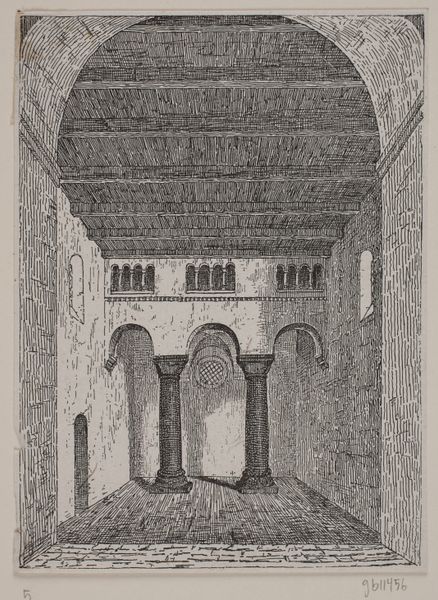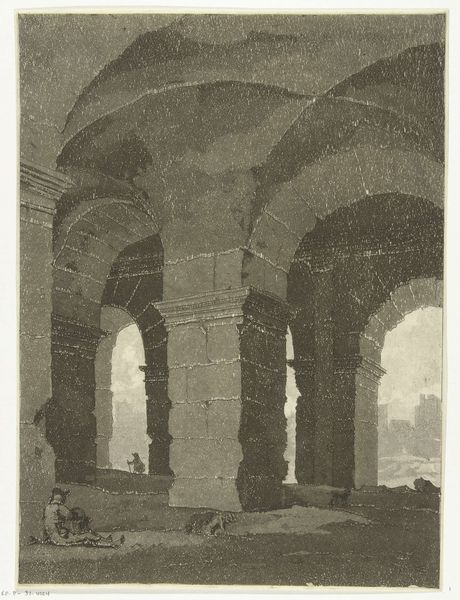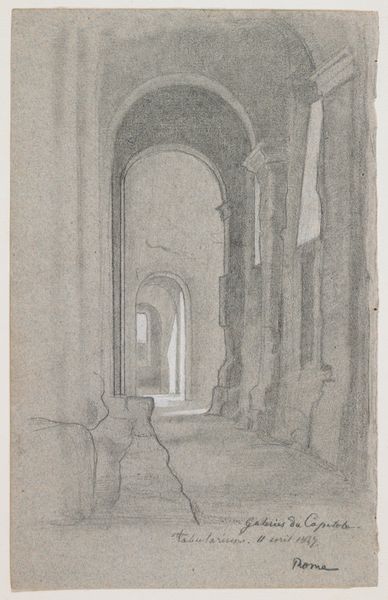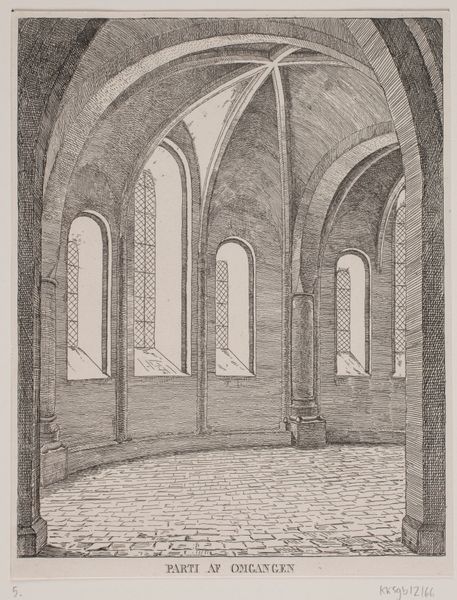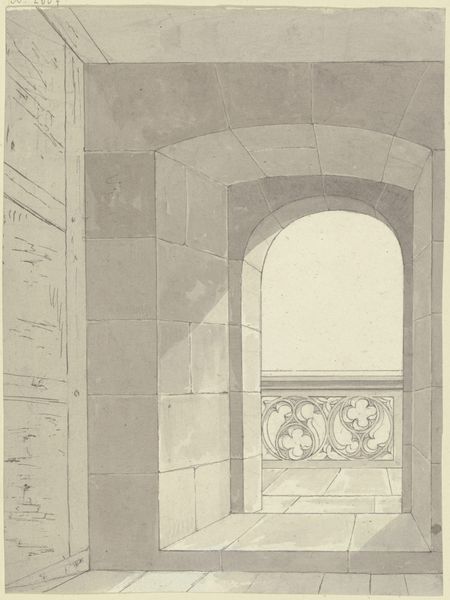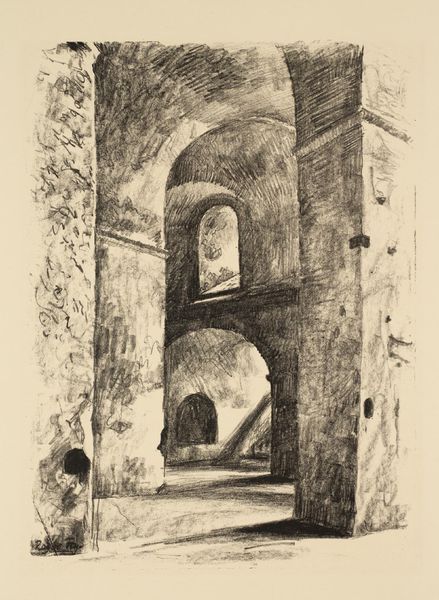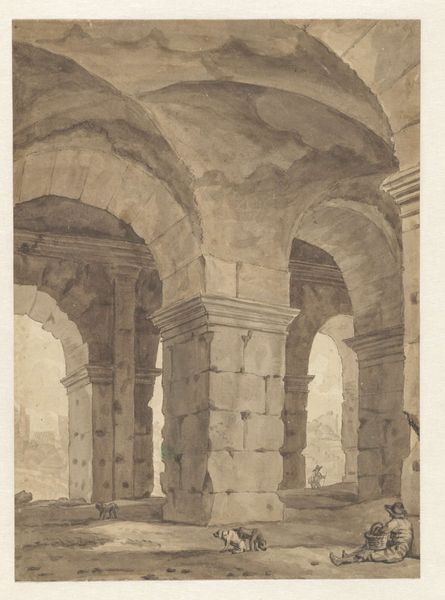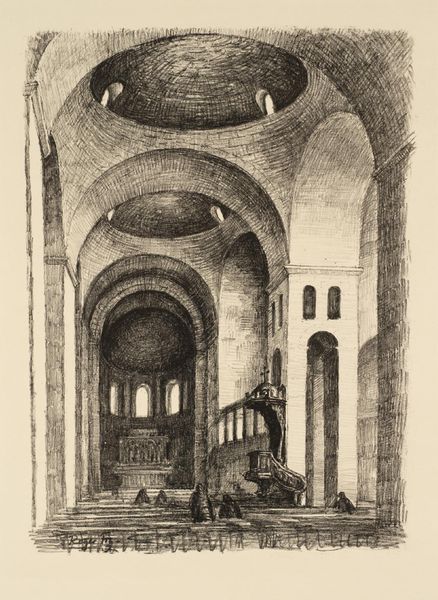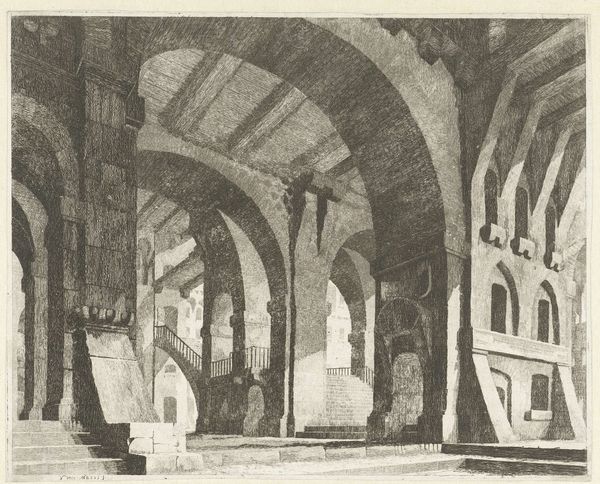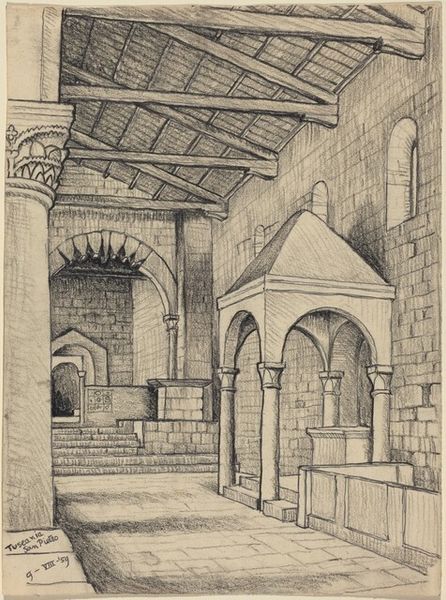
drawing, ink, architecture
#
drawing
#
landscape
#
ink
#
geometric
#
ancient-mediterranean
#
architecture
Dimensions: height 262 mm, width 182 mm
Copyright: Rijks Museum: Open Domain
Curator: I find the quiet grandeur of this interior absolutely captivating. Editor: It has an undeniably somber presence, wouldn’t you agree? What are we looking at exactly? Curator: This is “Interieur van antieke tempel gelegen ten oosten van Gallipoli” by Louis Ducros, created in 1778. He renders this ancient architectural space with ink, lending itself towards the landscape tradition. Note the composition of forms - the vaulted ceilings and their receding repetition… Editor: The archways definitely create a feeling of entering some symbolic threshold; I feel I’m on the precipice between one world and another. The soft grey palette reinforces this contemplative feeling. Does Gallipoli have specific connotations here? Curator: The artist uses the bare minimum of materials to generate a sense of depth and proportion, almost like he is sketching in a dream. Considering the date, the artist is likely pulling from ancient architectural principles. See how the weight and massing is conveyed? Editor: Well, Gallipoli itself, of course, became a key site in Classical history as a crossing point to the Hellespont, steeped in tales of war and heroism. But yes, focusing on that receding arcade, those rounded, hollow spaces. Do you feel like there's an emptiness there, an abandonment? Perhaps Ducros captured some of the solemnity from the original Greek acropolis? Curator: Absolutely! What’s compelling to me is how he creates a strong horizontal vector—a directional pathway, broken only by those vertical pillar forms—all intersecting with circular, dome-like vaults that rise upward, a stark visual rhythm, really. Editor: Very true! It brings to mind how classical ruins become these poignant symbols of vanished glory, evoking meditations on transience and the cyclical nature of time itself, or possibly something related to memory, like remembering an age lost forever. Curator: It is interesting how a landscape drawing of geometric forms from ancient times may give off feelings of transience. The stark beauty lies in its careful balance, and the way each element reinforces the structural whole. Editor: It certainly gives us plenty to contemplate—the ruin, the record, and the ripples in time.
Comments
No comments
Be the first to comment and join the conversation on the ultimate creative platform.


